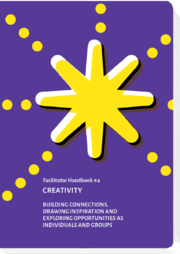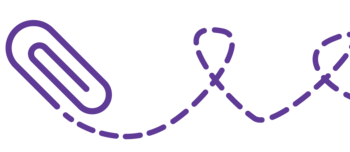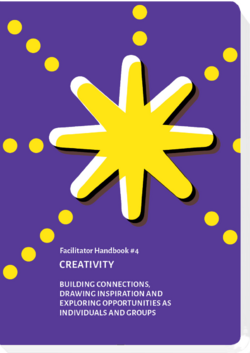Goal
- Participants come in a creative mode, make associations, or the kind of thinking which allows us to draw connections and associations between different or previously unrelated ideas, words, and experiences.
- They explore a broad range of different possible solutions, as perceived within a group setting.
Steps
1. Each participant receives a paperclip, if possible it should be oversized.
2. Introduce the exercise: The task is to show others what you can do with a paper clip beyond merely holding papers together. Try to be innovative. For example, participants might might transform, shape, or destroy the paper-clip.
3. Individual work on “prototypes”. Presentation of each participant’s prototype.
Reflection
- What was the most common prototype?
- What were the most surprising ones?
- What can you learn from a paper-clip?
- What does a paper-clip have to do with creativity?
Handbook for Facilitators: Creativity Handbook
This text was published in: N. Zimmermann (ed.), E. Leondieva (ed.), M. Gawinek-Dagargulia (ed.) (2018). Creativity Handbook. Building connections, drawing inspirations & exploring opportunities as individuals & groups.Competendo Handbook for Facilitators.

Nils-Eyk Zimmermann
Editor of Competendo. He writes and works on the topics: active citizenship, civil society, digital transformation, non-formal and lifelong learning, capacity building. Coordinator of European projects, in example DIGIT-AL Digital Transformation in Adult Learning for Active Citizenship, DARE network.
Blogs here: Blog: Civil Resilience.
Email: nils.zimmermann@dare-network.eu
Experiences
Creativity comes into play when something new and unexpected occurs. In this exercise, it is a paper-clip. In other contexts, people might work with prototypes of a product or a service.
This task requires a state of mind free from the spoken and unspoken rules implicit in a given context. It encourages divergent, non-conformist thinking,
Variation
For digging deeper, the task might be extended: In example by a "what you can not do with a paperclip" excercise.
And in the following by a synthesis and more sophisticated product design (shapes, materials) which might lead to really new insights how a variation of a paperclip might serve people.








